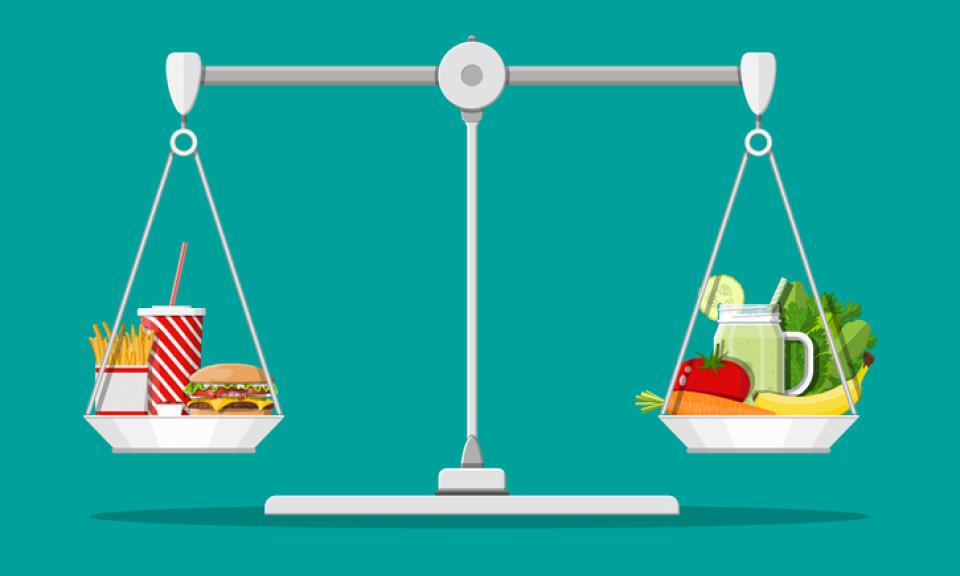It’s the cues in our environment that encourage overeating: regulating the food retail market could be an important part of the solution
Following a healthy diet can be hard. On average, we make 200 decisions about food every day. And while we might think we freely choose the food we buy and eat, in reality much of our eating behaviour is influenced by our food environment.
It has become extremely difficult for people to resist the relentless bombardment of adverts for convenient, cheap, ultra-processed foods, the explosion of fast food outlets, and the opportunities to eat 24/7. In fact, Americans now consume on average 500 more calories a day than they did in the 1970s. And it’s not just in the US.
Around the world, obesity rates have soared and no country has yet managed to reverse the obesity epidemic. Nowhere is this more apparent than in Mexico, where almost three-quarters of the population are now overweight or obese, compared to just a fifth in 1996. It is this public health catastrophe that has been the focus of our recent research.
Mexico’s toxic retail food environment
Obesity reached epidemic proportions in Mexico after it joined the North American Free Trade Agreement in the early 1990s, allowing the influx of global fast food chains, and making cheap, ultra-processed foods available everywhere. It is by no means a coincidence that Mexicans are one of the largest consumers of processed foods in Latin America and drink 163 litres of soft drink per person per year on average.
The damage of this kind of diet is even more visible because of the COVID-19 pandemic. More than 200,000 Mexicans have died from COVID-19, the world’s third-highest recorded death toll, with obesity and high blood pressure the chief underlying conditions that may have complicated the disease.
In recent years, Mexico has been in the vanguard of efforts to adopt front-of-pack warning labels and tax sugary drinks, which helped cut consumption by six per cent after just one year. But it has stopped short of regulating the food retail environment (the type, location and accessibility of food outlets) to make healthy food more accessible. So, can the solutions to this epidemic of unhealthy diets and obesity be found in sound public policies?
Convenience stores taking their toll on the waistlines of locals
In a recent study, we mapped food outlets across Mexico (fast food, convenience stores, restaurants, supermarkets, and fruit and vegetable stores) to investigate how adult obesity risk is affected by the retail food environment. Almost all (99.5 per cent) neighbourhoods had at least one convenience store, but less than half (42 per cent) had a fruit and vegetable store.
We found a clear link between the presence of a greater number of convenience stores and a tendency to have a higher average body mass index (BMI) – possibly because these stores offer little fresh produce but lots of alcohol, fizzy drinks, ultra-processed snacks and other tempting junk food. In saturated urban neighbourhoods, with as many as 105 convenience stores, for every 10 per cent increase in convenience stores, the average resident’s weight is estimated to increase by one kilogram, equivalent to BMI 0.4 units (kg/m2) higher.
This suggests that, instead of traditional farmers markets and fruit and vegetable stores where local produce is cheap and plentiful, the food needs of urban Mexicans are increasingly met by convenience store chains. These chains are more common than fast food outlets and continue to multiply, with a new convenience store opening in Mexico every six hours.
But not all residents are equally affected. Convenience stores and fast foods outlets are not as common in disadvantaged neighbourhoods with little infrastructure or in the wealthiest neighbourhoods that are isolated from commercial areas. Rather, it’s the middle-income households who have both the greatest exposure to convenience stores and the disposable income to buy ultra-processed foods and drinks. Put simply, they step from undernutrition into obesity.
Making healthy choices easier
Mexico is a clear illustration that interventions focused on changing individual behaviour such as taxes and labelling won’t be enough to stem the tide of obesity and non-communicable diseases. By regulating and monitoring the retail food environment, governments can help people to help themselves by increasing access to affordable, nutritious foods, so people can automatically make healthy decisions. Even more than that, by minimising the time, effort and costs of making healthier choices, regulation can reduce the constraints low income places on healthy eating without widening health inequalities.
An effective strategy needs to recognise the importance of action at national, local and individual levels. Critical steps to achieve this could involve:
- Regulating the number and opening times of convenience stores – by restricting planning applications.
- Increasing the availability and accessibility of healthy foods in convenience stores – by using subsidies to lower the price of healthy foods.
- Making fruit and vegetable stores more noticeable and affordable – with financial incentives to encourage owners to locate stores in underserved areas.
- Shaping and guiding consumers' choices into healthier choices – by having two for one promotions on healthier foods and placing healthy choices at the eye level of children.
The Mexican state of Oaxaca recently took the radical step of banning junk food sales to children. Driven by an unusually young COVID-19 death toll and spiralling childhood obesity rates (doubling between 1996 and 2006 from 7.5 per cent of the population to 15 per cent). Similarly, a new report by UNICEF, the Food & Agriculture Organization of the United Nations, the Pan American Health Organization, and the National Institute of Public Health in Mexico proposes prioritising the availability of healthy options, approving a “Right to Adequate Food” law, and transforming the food environment.
But regulating the retail environment is not the sole answer, and there are complementary policies that tackle the multiple influences on diet and obesity from the individual level to the whole population, that governments can package together for an even bigger impact. Only by tackling this complex system of influences on behaviour might we really begin to reverse the obesity epidemic.
This article draws on findings from “The Retail Food Environment and its Association with Body Mass Index in Mexico” by Elisa Pineda (Imperial London), Eric J. Brunner (University College London), Clare H. Llewellyn (University College London) and Jennifer S. Mindell (University College London).


